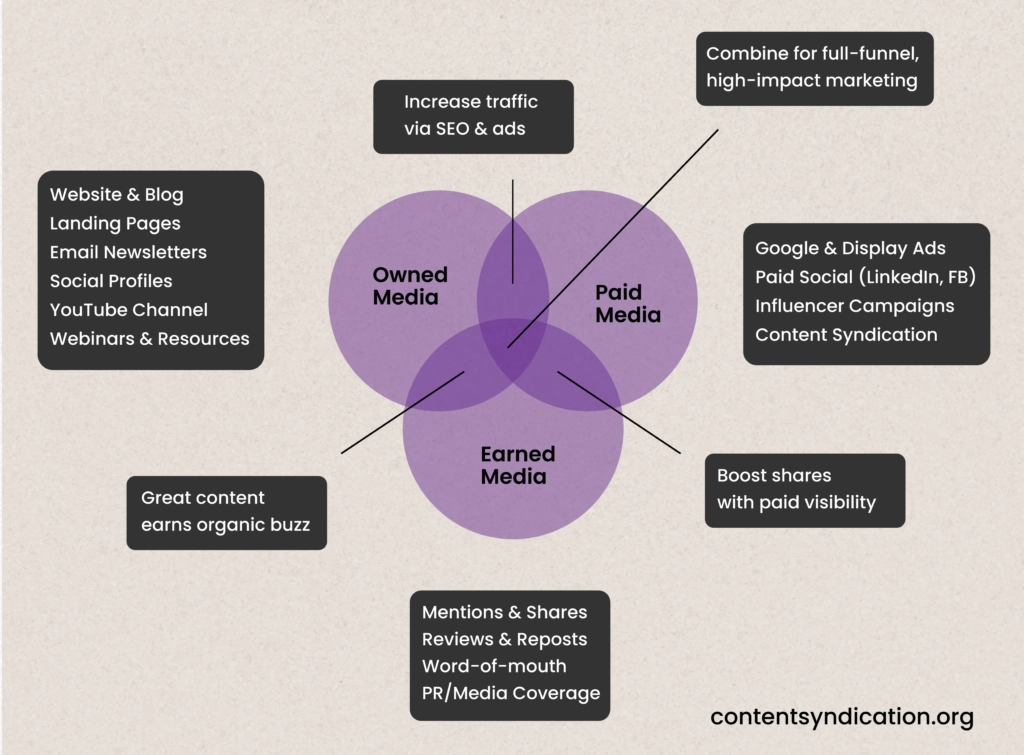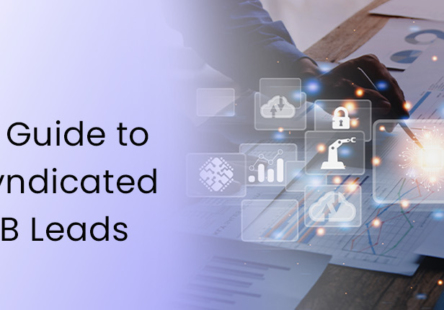You’ve created a powerful piece of content. It’s insightful, well-researched, and perfectly aligned with your audience’s needs.
Yet it’s barely helping. That’s because content creation is no longer enough. Today, crowded B2B spaces demand mastery in strategic distribution and promotion.
Without an effective distribution plan, even the most brilliant content fades into obscurity.
In this blog, we’ll understand every aspect of content distribution and promotion — to help your B2B marketing efforts achieve measurable success.
What is Content Distribution?
Content distribution is the strategic process of sharing, publishing, and boosting your content reach across various channels to improve its visibility, reach, and impact.
It’s how you ensure your valuable content actually lands in front of decision-makers at the right moment.
Yet many B2B marketers still struggle.
According to the Content Marketing Institute, 91% of B2B marketers say they use content marketing, but only 37% have a documented content strategy to guide distribution efforts.
The solution is to move away from “post and hope” tactics. Use a multi-channel, data-driven distribution strategy tailored to platform and audience dynamics.
Why Content Distribution and Promotion in Marketing is Important
Creating high-quality content without a solid distribution plan is like letting your content settle with dust.
Investing significant resources into content creation but compromising on promotion efforts often results in low engagement rates and poor ROI.
An effective distribution strategy ensures that:
- Your content reaches the right audience segments.
- Your marketing ROI improves by repurposing and extending content value.
- Your sales pipelines are consistently nurtured with high-quality interactions.
Marketers must shift their mindset. They should keep content distribution top of mind and ensure that promotion strategies are embedded in every campaign.
Types of Content Distribution Channels

Choosing the right mix of distribution channels is crucial, yet overwhelming.
Many marketers rely heavily on one or two familiar channels, missing out on diverse engagement opportunities.
Some even ignore owned media in favor of costly paid ads, leading to inconsistent results.
A balanced content distribution strategy should include:
- Owned Channels: Blogs, websites, and newsletters (control and brand authority).
- Earned Channels: PR, guest posts, and influencer mentions (credibility and reach).
- Paid Channels: Sponsored posts, LinkedIn ads, and retargeting campaigns (scalability).
- Shared Channels: Social media shares, partnerships, and communities (network effect).
The integration of all four; known as the PESO Model. The model aims to diversify your reach and minimize risk.
And it’s working: 73% of B2B marketers still rely on email newsletters, proving traditional channels continue to deliver ([Content Marketing Institute]).
How to Develop a Content Distribution Strategy
Too often, B2B marketers jump straight into promotion without a clear plan. This results in scattered efforts and minimal outcomes.
A well-developed content distribution strategy aligns content goals with distribution actions.
Steps to build a strong strategy include:
- Deep Audience Understanding: Go beyond demographics to explore buyer intent, pain points, and platform preferences.
- Channel Prioritization: Focus on where your audience actually consumes information, not just where it’s easy to post.
- Content Atomization: Repurpose major assets into bite-sized formats to cater to different channel dynamics.
- SMART Goal Setting: Tie distribution metrics (engagement, lead generation) to larger marketing and sales KPIs.
- Leveraging Intent Data: Use platforms like Bombora and OnlyB2B Mesh Intent to enable precise targeting based on buyer behavior for improved distribution efficiency.
Without this structured approach, even the best content can fall flat.
Exploring Content Distribution Platforms
Selecting the wrong platform can cripple a distribution strategy.
B2B marketers often over-invest in trendy platforms while ignoring proven performers.
Some of the most impactful platforms for B2B include:
- LinkedIn: Essential for professional engagement through organic posts, sponsored updates, and targeted InMails.
- Email Marketing: A powerhouse for personalized, high-conversion communication.
- Content Syndication Networks: Expand your content’s reach through platforms like NetLine, TechTarget, and OnlyB2B.
- SEO: Optimizing your company blog ensures consistent organic traffic and nurtures long-term brand authority.
- Paid Search and Display: Remarketing keeps your brand top-of-mind across longer B2B buying cycles.
The best approach combines organic, paid, and partnership channels to drive consistent results.
Content Distribution Frameworks
Frameworks take the chaos out of content distribution.
They create structure. They help you scale.
Here are three worth building into your strategy:
A. Rule of 7 Framework
B2B buyers typically need 7+ touchpoints before engaging seriously.
Distributing a single piece of content across multiple platforms ensures repeated exposure and familiarity.
B. Hub-and-Spoke Framework
Building a “hub” (like a whitepaper) and distributing “spoke” content (blogs, social posts, videos) leads to sustained traffic and engagement.
C. Waterfall Repurposing Model
Turning one flagship asset into 20+ micro-assets extends its shelf life, reaching audiences across formats and preferences without requiring constant new content creation.
Adopting structured frameworks provides better resource allocation and greater impact.
Role of Content Distribution Agencies
Even high-performing marketing teams can struggle to manage distribution on a scale.
Partnering with a content distribution agency can:
- Scale promotion efforts without overloading internal teams.
- Leverage established networks for faster audience reach.
- Optimize campaign performance using real-time data and insights.
Distribution agencies offer an external perspective, industry insights, and execution excellence that help improve your distribution from just functional to result-driven.
Measuring the Success of Content Distribution Efforts
Success isn’t just about “views.” Without clear measurement, it’s impossible to know if distribution efforts work.
Key performance indicators include:
- Reach and Impressions: To measure visibility.
- Engagement Metrics: Clicks, shares, time spent on page.
- Lead Metrics: MQLs, SQLs generated through content.
- Conversion Rates: Content-driven pipeline contributions.
- Revenue Attribution: Tying content interactions to closed deals.
And when you have strong analytics, you ensure every content piece can be optimized for maximum ROI.
Future Trends in Content Distribution and Promotion
Content distribution is undergoing major shifts — and B2B marketers must stay agile.
Here’s what’s shaping the future:
- AI Personalization: Using predictive analytics to deliver hyper-targeted content.
- Interactive Content: Webinars, polls, calculators drive higher engagement.
- Voice and Visual Search: Optimizing content for non-traditional discovery methods.
- Privacy-First Marketing: With third-party cookies phasing out, first-party data strategies will dominate.
In Conclusion
There’s no universal blueprint. Acting without a strategy is a waste of time and money.
But when done right, it can be game-changing to see the results you want.
Here are quick tips to succeed:
- Focus on audience-centric strategies.
- Prioritize channel diversification.
- Repurpose content smartly.
- Align content with buyer intent.
- Measure and refine distribution continuously.
Don’t let your incredible content go unseen. Build a content strategy that reaches your audience and builds brand loyalty.
Frequently Asked Questions (FAQs)
What is contact validation in B2B content syndication?
Contact validation is the process of verifying the accuracy, completeness, and relevance of contact data—including emails, phone numbers, job titles, and company details—before or during a content syndication campaign. It ensures your outreach targets the right audience.
Why is contact validation important for my content syndication efforts?
Because even the best content won’t perform if it’s sent to outdated or inaccurate contacts. Validation reduces bounce rates, ensures better deliverability, enhances lead quality, boosts campaign ROI, and protects your brand’s sender reputation.
How can I increase the click-through rate (CTR) of my content?
To enhance CTR:
- Craft compelling headlines and meta descriptions.
- Use clear and enticing calls-to-action (CTAs).
- Optimize content for mobile devices.
- A/B test different content formats and headlines to see what resonates best with your audience.
What role does SEO play in content distribution?
SEO enhances the visibility of your content in search engine results, making it more accessible to users actively seeking information, thereby potentially increasing CTRs.
What are the main types of content distribution channels?
There are four key channel types (PESO Model):
- Owned – Your blog, website, newsletter
- Earned – PR mentions, guest posts, influencer shares
- Shared – Social media and community shares
- Paid – LinkedIn ads, paid search, retargeting
A balanced strategy combines all four for maximum reach and ROI.
Why do most B2B content strategies fail without distribution?
Because many marketers focus on content creation and overlook distribution. Without promotion, even top-tier content won’t reach your ideal audience—leading to poor engagement, low ROI, and wasted effort.
How do I develop an effective content distribution strategy?
Use these core steps:
- Know your audience deeply (pain points, channels they use)
- Prioritize the right platforms (email, LinkedIn, etc.)
- Repurpose long-form content into micro-assets
- Set SMART goals aligned with your funnel metrics
- Leverage intent data for precise targeting
Which platforms are best for B2B content distribution?
Top-performing platforms include:
- LinkedIn – for professional outreach
- Email marketing – for high-intent engagement
- SEO + Blogging – for long-term visibility
- Content syndication networks like OnlyB2B, NetLine
- Paid search/display – to stay top-of-mind across long buying cycles
What future trends should I prepare for in content distribution?
- AI-powered personalization to deliver hyper-relevant content
- Interactive formats like polls, calculators, and webinars
- Voice and visual search optimization
- Privacy-first strategies using first-party data over cookies
Staying agile and data-informed is the key to future-proofing your strategy.
What’s the biggest takeaway for B2B marketers?
Don’t rely on luck or “post and hope.” Build a data-driven, audience-first distribution system that combines strategy, repurposing, channel diversification, and analytics to ensure your content gets seen—and drives revenue.
What are some common mistakes to avoid in content promotion?
Avoid:
- Overlooking the importance of a distribution strategy.
- Neglecting to optimize content for different platforms.
- Failing to analyze and adjust strategies based on performance data.




